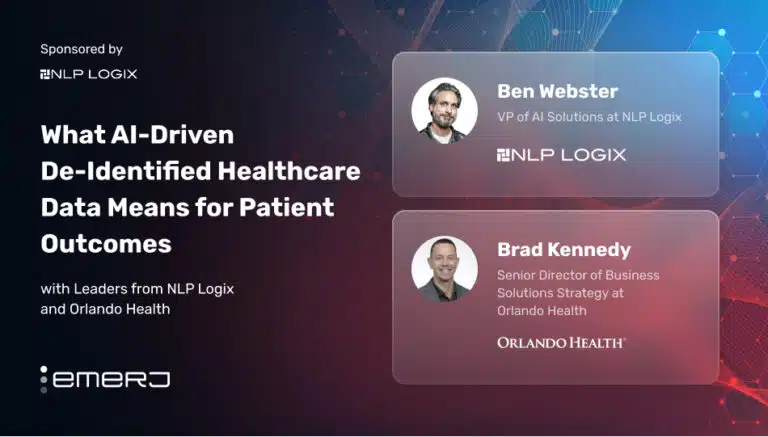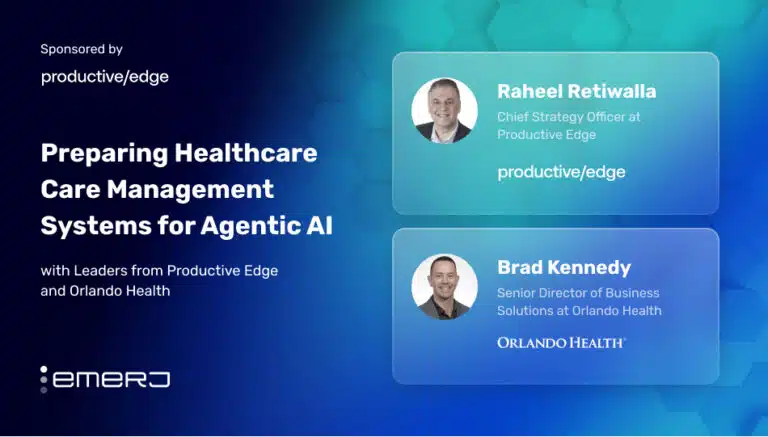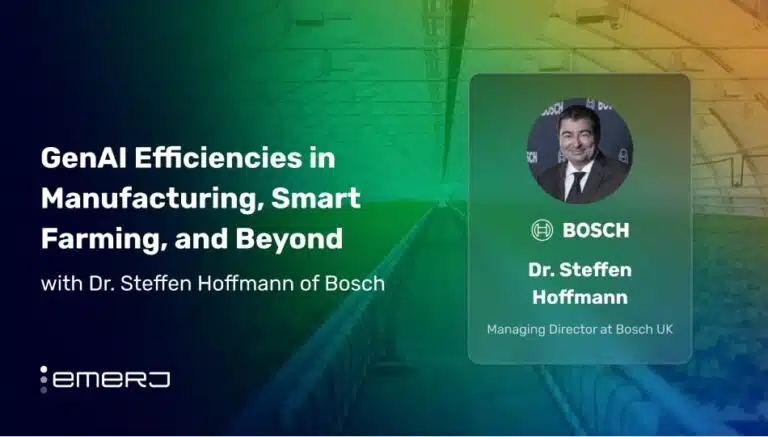Merck, a global leader in healthcare and pharmaceuticals, focuses on developing innovative medicines, vaccines, and animal health products to improve lives worldwide.
In 2023, Merck reported an annual revenue of $60.1 billion, reflecting a 1.4% increase from the previous year. With approximately 64,000 employees globally, Merck continues to drive advancements in oncology, vaccines, and other therapeutic areas.
Although Merck’s total investment in AI is undisclosed, we found evidence that these investments sit upwards of $1.2 billion. In 2023, Merck invested over $674 million in partnering with Exscientia, focusing on AI applications in drug development, manufacturing, and regulatory expediency. Merck also recently invested $594 billion in AI drug discovery platforms when joining forces with BenevolentAI.
In this article, we focus on two key use cases of data-driven AI models at Merck:
- Accelerating drug manufacturing processes: Using data analytics and machine learning to support the shift from batch to continuous manufacturing, ultimately reducing operational costs and false rejects.
- Streamlining regulation compliance: Leveraging robotic process automation (RPA) to expedite regulatory management, reducing product-to-market delays.
Accelerating Drug Manufacturing Processes
Traditional batch manufacturing processes involve multiple unit operations executed separately and sequentially. Conversely, continuous manufacturing integrates all such stages — material feeding, processing, and quality — into a seamless operation. The method enhances efficiency, reduces costs, accelerates production timeliness, and allows for real-time monitoring of product quality.
While other industries have been quick to adopt continuous manufacturing, pharmaceutical companies have largely clung to batch manufacturing. Continuous processes make no more than 5% of pharmaceutical products, Glatt Systemtechnik managing director Ralf Kretzschmar estimates in an interview with Bioprocess.
However, batch manufacturing has brought several scale-up challenges when moving from pilot to commercial manufacturing, as explained by Senior Research Associate at Broad Institute of MIT and Harvard Bernadette Cuffari in a helpful primer for News Medical Life Sciences:
- Quality Risks: Scaling up batch size requires re-optimizing parameters like temperatures and pressures, which can lead to quality inconsistencies
- Equipment Footprint: Scaling up from batch development necessitates new, larger equipment, which involves large capital expenditure, installation, and lengthy qualification to meet regulatory standards
- Rigid Batch Sizes: Each batch requires completion before starting the next, resulting in delays when responding to changing market demands
- Transfer Costs: During separate stages of batch production, material transfers between facilities incur significant costs
According to an Arc Insights briefing, Merck wanted to use the same equipment to develop new products and manufacture them commercially. The company also wanted greater data collection and oversight of manufacturing trends to optimize process performance — a task largely incompatible with batch manufacturing.
According to corroborating case study documentation from the European Pharmaceutical Review, Merck partnered with Seeq Corporation in 2019 to achieve this objective, leveraging Seeq’s analytic capabilities to support a shift from batch to continuous manufacturing.
According to documentation from Arc Insights, Merck combined manufacturing data from its OSIsoft PI System with Seeq’s data analytics solution to enable an automated process. Merck’s shift to continuous manufacturing was refined, optimized, and standardized via the insights provided by Seeq’s analytics.
The Arc Insights documentation also reports that, in the pilot case, a tablet manufacturing application helped develop the compression, transfer of powders, and blending into tablets into a continuous process. It further integrated the feeding, blending, compression, and film coating operations into upstream and downstream processes.
Seeq was used to analyze the relationship between multiple stages and compression parameters. Merck teams could isolate the data or use Seeq’s advanced analytics dashboard to adjust processes based on data-driven insights.

Screenshot of the “PI Vision for Continuous Process Stages” as depicted in the Arc Insights use case documentation. (Source: Seeq)
Arc Insights documentation also reports that Merck’s continuous manufacturing processes now reduce release testing delays associated with batch processes. Earlier, 10-15 samples may be taken per batch. Then, offline testing in an analytical lab would take two weeks before the batch was tested and released. On the other hand, Merck can conduct real-time testing with continuous manufacturing, collecting more than 1,600 tags a second.
As a result, the company expects to be able to complete product release testing in around a day — a significant improvement from weeks-long testing associated with batch manufacturing.
Merck also partnered with Amazon Web Services (AWS) to reduce the incidence of false rejects in product manufacturing. False rejection rates for pharmaceutical companies range anywhere from 1 to 45% and cost the industry up to $740 per year, according to a case study by Körber.
According to an AWS briefing, Merck employs an AI and machine learning platform built on Amazon Sagemaker. Merck uses AWS DataSync to ingest product defect image data from inspection machines and then generative models such as Generative Adversarial Networks (GANs) to develop synthetic defect data.
Below is a visual of how Merck develops synthetic image data for complex defects:

Screenshot from an Amazon Web Services Video. (Source: Amazon Web Services)
The model produces an understanding of the root causes for false rejects and prescribes corrective remediations. After full integration, an AWS newsletter finds that the technology reduced Merck’s false reject rate by 50%.
Streamlining Regulation Compliance
As explained in a comparative study of medical device regulation of various countries published in Expert Review of Medical Devices, the regulatory processes for healthcare firms vary nation by nation but almost universally involve complex activities linked to several value chains — gathering compliance data, generating quality control documents, applying for licenses, and recalibrating supply chain operations.
According to a case study by Automation Anywhere, a core task for the Merck team is submitting documentation to regulators for product approval. The high volume of paperwork — amplified by up to 30 regulatory checkpoints per country— resulted in critical delays in Merck’s screening process and, ultimately, product release.
Time-consuming documentation work took 6-8 months for the Merck team to process, according to Merck Head of Robotic Processing Automation Dr. Radhika Mahadev in an interview with CIO.inc. As a result, Merck partnered with Automation Anywhere in 2021 to expedite trade and regulatory compliance management via robotic process automation (RPA), as explained in the latter company’s previously cited use case documentation.
RPA utilizes software bots to record, emulate, and interpret human actions involved in regulation compliance. Central to RPA are AI technologies — like Intelligent Document Processing (IDP) — that use advanced Optical Character Recognition (OCR) to accurately extract data from structured and unstructured regulatory documents.

Screenshot of a graphic illustrating the relationship between RPA and intelligent automation. (Source: Constellation Research)
A review of the same case study from CIO found evidence of several data inputs that Merck’s RPA system draws from:
- Documentation Formats: Regulatory documents in various formats, such as PDFs, emails, faxes, and postal mail, are processed by bots to extract and structure data
- Regulatory Criteria: Country-specific compliance requirements — such as toxic vs. non-toxic product classifications and regulatory filing standards — are integrated into the automation system
- Systems Data Applications: SAP, Oracle, Salesforce, and other enterprise system applications are automated to streamline compliance processes
Mahadev is quoted in the CIO review noting that gaining board approval to automate the regulatory process was a “herculean task.” He goes on to note that, to assure Merck board members of accurate processing and that there was a manual safeguard mechanism, bots had restricted access to the production system with each bot mapped to unique IDs, thereby allowing IT teams to track their activity at any time.
Mahadev also reports in the CIO.inc interview that, during pilot integration in Korea alone, Merck’s automated bots were able to clear the entire backlog of paperwork for 30,000 products within one month. From there, Merck expanded into 64 different automated regulatory processes spanning 14 countries, according to the Automation Anywhere case study documentation.
The CIO.inc article also claims that Merck’s automated regulatory compliance system delivered:
- Expedited Regulatory Compliance Times: Reducing regulatory compliance schedules from 6-8 months to 1 month
- Reductions in Compliance Errors: Raising accuracy in compliance documentation to 97%
- Improvements in Product-to-market times: Reducing regulatory delays has boosted Merck’s ability to bring products to market faster
The Automation Anywhere case study documentation claims the following results:
- Greater Staff Availability: Saving 121,000 hours worth of staff work for regulation management, automation enabled Merck’s staff to focus on more complex tasks that genuinely benefit from manual intervention.


















